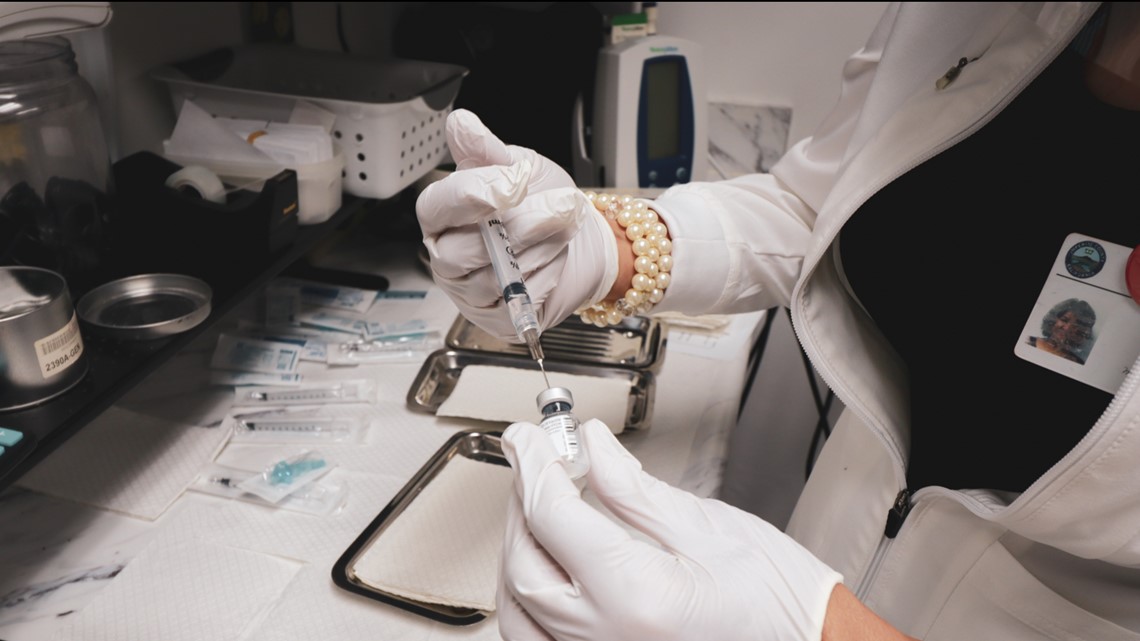IMPERIAL, Calif. — Imperial County officials say they’re working with an inadequate supply of COVID-19 vaccines as they administer early doses to residents in one of the state’s hardest-hit regions.
About 2,000 people in the county have received their first dose of the vaccine as of Monday. Most are employees at the county’s two hospitals, El Centro Regional Medical Center and Pioneers Memorial.
But the roughly 6,200 vaccine doses that have been shipped to the county since mid-December aren’t enough to cover all those eligible under the current phase of the rollout. The vaccine is administered in two doses, and about two-thirds of Imperial County’s supply is reserved for the first round of shots.
Employees at risk of exposure who work in certain health care-related settings, along with residents in long-term care facilities, are first being targeted. Without adequate supplies, the county has had to determine who among that population is at highest risk, Public Health Director Janette Angulo said.
“We have to distribute it in an equitable way so that everybody who’s doing that frontline work can get at least their highest, highest risk vaccinated,” she said.


Another 500 doses are expected to arrive this week, Angulo said at Tuesday’s Board of Supervisors meeting. Pharmacies also began on-site vaccinations this week at one of the county’s three skilled nursing facilities.
Dr. Stephen Munday, the county’s public health officer, said leaders are doing everything possible to get more vaccines, but he expects limited availability to continue.
“This is literally a daily process, and I can promise you that it is our job,” Munday said at a news conference last week. “This is what the health department does. We are advocating for our community.”
Imperial County, with a population of 181,000, had the highest COVID-19 hospitalization rate in the state this week, a ranking it has held often during the pandemic. The two hospitals had 143 COVID-19 patients on Wednesday.
The county suffers from high poverty, high rates of chronic disease and a shortage of medical resources. During the early days of the pandemic, its hospital system was so overwhelmed that officials were forced to divert hundreds of patients elsewhere due to lack of capacity.
When the county was hit by another wave of cases in the fall, leaders reactivated an emergency facility at the community college and set up a 50-bed tent in the El Centro hospital’s parking lot.
Some patients have been transferred to San Diego County as officials manage capacity, but San Diego has also recently experienced enormous upticks in cases. A field hospital at the Palomar Medical Center in Escondido was activated in late December after sitting unused for months.
Despite their proximity, San Diego and Imperial counties each are dealing with different challenges, said Corinne McDaniels-Davidson, director of the Institute for Public Health at San Diego State University.
She said it’s important “to keep in mind the very different types of population and the rurality that (Imperial County officials) have to deal with as they’re moving forward.”
San Diego officials on Monday opened a “vaccination superstation” near Petco Park with a goal to administer vaccines to 5,000 health care employees a day. County facilities have received nearly 200,000 doses but so far have administered about 70,000 as of Monday, a spokesperson told inewsource.
Including the first tier of eligible recipients and residents 65 and older, 1 million people are eligible in San Diego for the vaccine.
Gov. Gavin Newsom said this week that the state is working to speed up vaccinations. As of Monday, California had received almost 2.5 million doses of the vaccines and about 817,000 had been administered.
More than 24,000 Imperial County residents have tested positive for COVID-19 as of Wednesday. About 22,000 have recovered and 454 have died.
Like San Diego County, Imperial falls under the purple tier, the most restrictive stage in the state’s system meant to control the spread of the coronavirus. It has a 18.1% seven-day positivity rate this week, compared to with the 17.6% statewide.
Angulo, the public health director, said a vaccination planning group of hospitals, health care providers, county leaders and other agencies has been meeting regularly. Officials also are surveying local businesses to learn how many employees are considered at the highest risk because they anticipate they will need to prioritize these people in later vaccination phases. They’re also gauging employers’ interest in providing facilities for vaccine clinics.
So far, the county has identified 4,100 high-risk workers — employees working in places such as primary care clinics, home health care and mental health facilities — who will be eligible under the next tier of doses. Angulo said about 40% of those workers will be able to be vaccinated with the county’s current supply.
inewsource is a nonprofit, independently funded newsroom that produces impactful investigative and accountability journalism in San Diego County. Learn more at inewsource.org.

